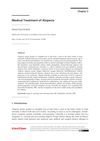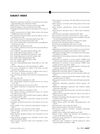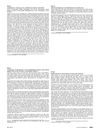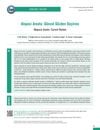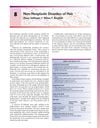Differential Diagnosis of Trichotillomania by Trichoscopy
March 2014
in “
Journal of The American Academy of Dermatology
”
trichotillomania alopecia universalis azathioprine alopecia areata T lymphocyte autoimmune disorder hair follicle cortexolone 17a-propionate CB-03-01 antiandrogen dihydrotestosterone DHT hair dermal papilla cells DPCs androgenic alopecia trichoscopy flame hairs v-sign hair powder Satoyoshi syndrome topical diphencyprone AU AA
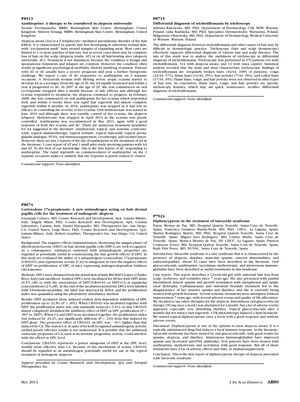
TLDR Azathioprine may help with severe hair loss, a new topical treatment could counteract hair thinning, and trichoscopy can diagnose hair-pulling disorder effectively.
The document reports on various studies and case reports related to treatments for different types of alopecia. One case study describes a 36-year-old woman with alopecia universalis (AU) who experienced rapid hair regrowth with the use of azathioprine, an oral immunosuppressant, on two separate occasions. This suggests that azathioprine may be an effective treatment for AU, a severe form of alopecia areata (AA), which is a T lymphocyte-mediated autoimmune disorder of the hair follicle. Another study evaluated the efficacy of cortexolone 17a-propionate (CB-03-01), an antiandrogen, in counteracting the effects of dihydrotestosterone (DHT) on hair dermal papilla cells (DPCs) in vitro. The results showed that CB-03-01 almost completely abolished the inhibitory effect of DHT on DPC proliferation, indicating its potential as a topical treatment for androgenic alopecia. Additionally, a study involving 370 patients demonstrated that trichoscopy is useful in the differential diagnosis of trichotillomania, with specific features such as flame hairs, v-sign, and hair powder aiding in noninvasive diagnosis. Lastly, a case report on Satoyoshi syndrome, a rare condition characterized by alopecia and other symptoms, described the successful use of topical diphencyprone in treating alopecia associated with the syndrome, marking the first report of such treatment.
